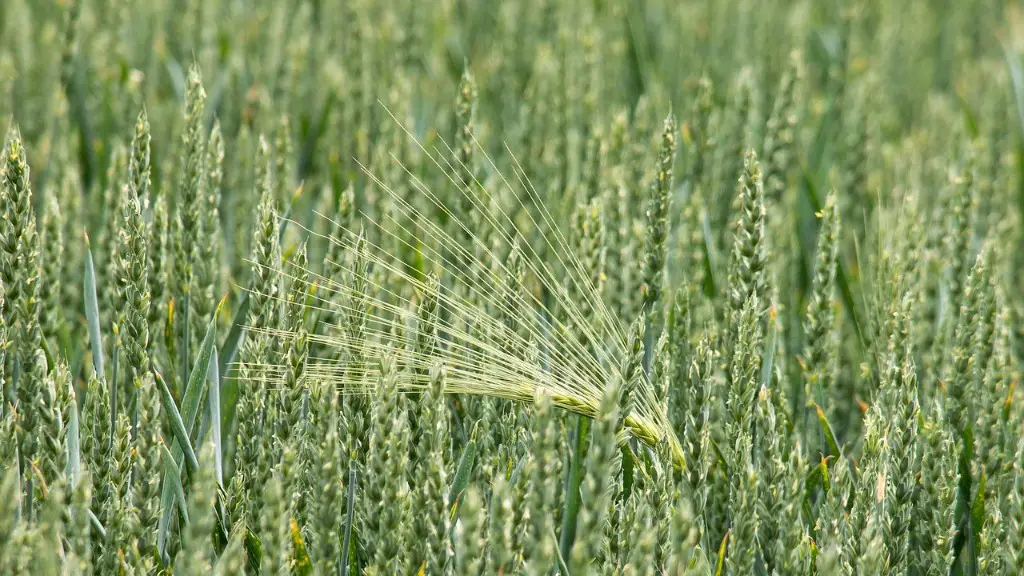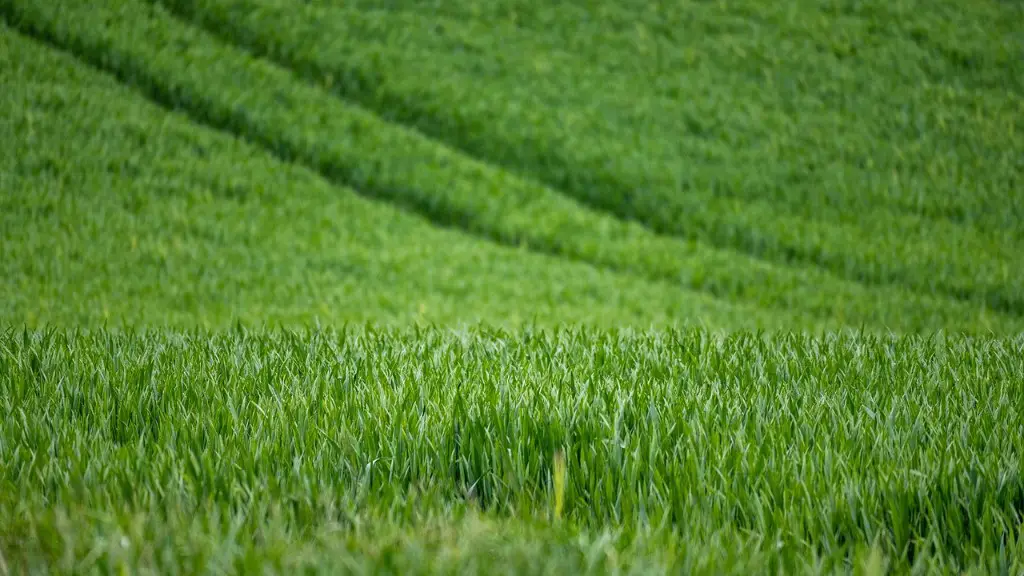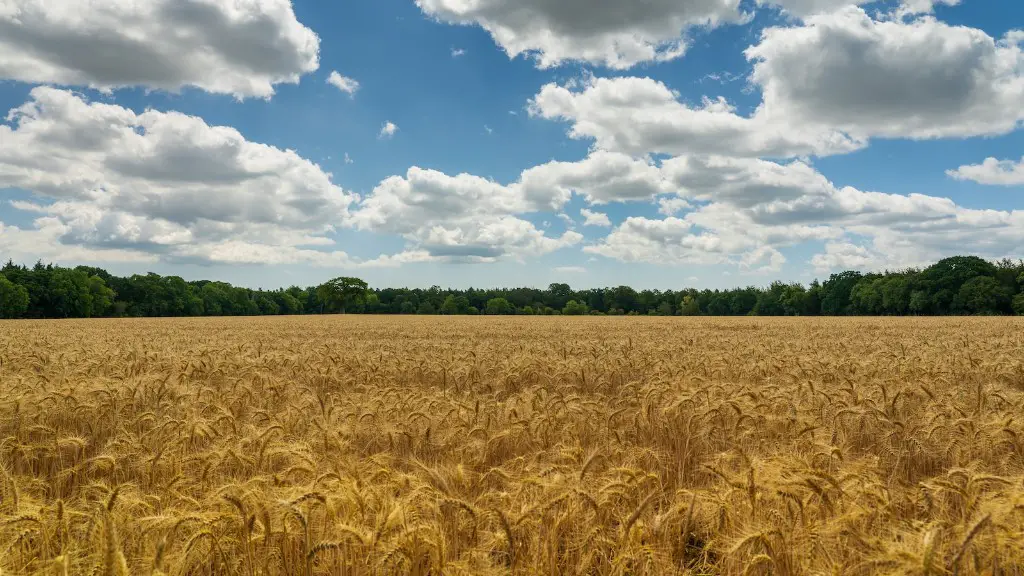Agriculture has been identified as one of the major contributors to deforestation, with large-scale commercial farming utilizing immense amounts of land to produce commodities such as soy, cattle, palm oil, rubber and cocoa. By clearing forests to create farm land, this has led to a substantial increase in carbon dioxide emissions, as trees are cut down and the carbon they have stored is released. Additionally, the need to create more space for grazing animals or planting crops has meant that areas of natural forest have been destroyed. Where forests have been torn down, they are often replaced by short-term monocultures with little to no natural diversity, leading to further environmental degradation and a lack of biodiversity. In some cases, it is also impossible to replant the area with other trees.
Furthermore, the use of chemical fertilizers and pesticides – used in many types of farming to improve crop yields and increase profits – can have a long term impact on an ecosystems health and water sources. This is because areas of agricultural land can seep this chemicals down into groundwater, leading to water contamination, diminishing biodiversity and stream disruption. Additionally, these practices can also reduce an areas soil fertility, as excessive harvest and cultivation depletes the natural nutrients in soil, requiring farmer to purchase more costly inputs such as chemical fertilizers.
In response to the issue of agricultural practices causing deforestation, there has been a rise in the development of sustainable agricultural methods and policies. One such approach is Agroforestry, which promotes the combination of growing trees and crops together in a managed way to create a productive, ecologically-sound system. By doing this, it allows farmers to maintain land with trees and vegetation, while also producing crops in a way that doesn’t require deforestation. There are also schemes like the Reducing Emissions from Deforestation and Forest Degradation (REDD) which rewards countries and communities that adopt sustainable land-use practices, providing incentives to protect standing forests and severely limit deforestation.
Commercial Farming and Deforestation
The rise in global demand for certain commodities has meant that commercial farming, such as soy and palm oil, has pushed further and further into rainforest areas. For example, 40% of the Amazon rainforest has been cleared for cattle, soy and palm oil. This is particularly concerning as rainforests are some of the most biodiverse ecosystems on the planet, and their destruction can have huge ramifications beyond the local community. For example, it has been estimated that 20% of the world’s oxygen is generated by rainforests, so the loss of these areas directly impacts the global climate.
The need to produce more food and produce to feed the world’s population is going to continue to increase, yet if we continue to damage the ecosystems that this process affects, then the long-term outlook for the environment is bleak. This is why it is essential that Agriculture adapts, by promoting sustainable methods and rewarding those individuals and nations who practice effective land management. Otherwise, the world’s vital resources and preserved areas will continue to be depleted, to the detriment of all.
Slash and Burn Agriculture
Another major issue with the global agricultural industry is the practice of slash and burn farming. This involves cutting down and burning forests or shrubland, and is most commonly used as a way to open up temporarily fertile land for planting. This has been a farming practice used around the world for hundreds of years, and while it is often seen as essential in order to create space for crops and grazing, it can also have a major downstream affect on the environment. In areas where the burning of trees and vegetation is practiced continually, it can have a sever impact on local ecosystems, as well as contributing to climate change. Additionally, after an area has been cleared and used, in most cases it can’t be replanted, leading to deforestation and soil degradation.
In order to reduce deforestation, farming practices such as slash-and-burn must be heavily curtailed, and farmers should seek out more sustainable ways of farming. One way this could be done is through providing incentives to farmers who practice sustainable land management. This way, farmers would be rewarded for taking care of their land rather than trying to extract as much as possible from it. Additionally, governments should also look to support small-scale farmers in removing economic barriers to adoption of sustainable land management practices. This can be done through subsidies and policies that promote environmentally-friendly agricultural practices.
Unsustainable Agriculture
Unsustainable agricultural practices are having a major impact on the environment, yet there are some ways that the agricultural industry can be adapted to try and reduce its impacts. One way is through promoting sustainability, such as instilling practices such as terracing – where farmers build raised levels of soil to assist in crop production and erosion prevention – which has been successfully implemented in mountainous regions in Peru. Other approaches can be taken through promoting projects such as agroforestry, which encourages the planting of multiple crops on the same area of land in order to promote soil fertility, water retention and biodiversity.
In addition to this, governments should also look to heavily subsidises sustainable agricultural practices, in order to aid in the transition away from deforestation and other environmentally damaging practices. This could include access to funds, land or educational resources, as well as providing incentives for private companies and grants for local communities. Additionally, governments should be pushing for change through policy, such as setting limits on the amount of carbon being emitted from land clearance, or legislation that requires forests to be replanted with native species in order to be used for commercial purposes.
Prevention of Deforestation through Technology
Technology can be used in a variety of ways to help prevent deforestation, particularly through smart agriculture. This includes the use of precision agriculture, where farmers can use data such as rainfall and soil composition to optimise their crops and reduce their use of land. Additionally, through the increased use of digital technology, farmers could access more information regarding best practices, allowing them to improve their output without the need for deforestation. Finally, the use of technologies to reduce waste can help divert resources away from agricultural production, decreasing the need for more land.
Overall, agriculture is a major contributor to deforestation, yet if done sustainably it can reduce the negative impacts it has. By implementing schemes such as agroforestry, or rewarding sustainable practices, it is possible to not only reduce the amount of land being deforested, but also to promote biodiversity and maintain soils. Governments should also look to heavily invest in technology and data to help prevent further deforestation and promote sustainability, while also setting stricter regulations on traditional agricultural practices that are damaging to the environment.
Conservation and Restoration
Conservation and restoration efforts for forests and other areas of land are becoming increasingly important in terms of helping ecosystems recover from deforestation. As well as conserving and restoring existing ecosystems, it is also possible to create new areas through reforesting. Reforesting involves planting native species on impacted land to bring back habitats and biodiversity, and often go hand-in-hand with other conservation measures such as creating game reserves and protected areas. Additionally, reforestation can also assist in reducing and sequestering carbon, helping to combat climate change.
Reforesting can be done in a variety of ways, such as through seedlings and man-made forests. Using seedlings involves collecting and propagating tree species native to that area and planting them on impacted land. Alternatively, man-made forests involve planting a range of different species non-native to an area, emphasizing the need for biodiversity on these lands. However, in order for reforestation efforts to be successful, it is essential that they are managed accordingly with the correct strategies in place to ensure that they are effective and successful.
Overall, conservation and restoration efforts can have a huge impact on tackling deforestation and aiding in the habitat’s recovery. By promoting reforesting – either through seedling or man-made forests – it is possible to bring life back to impacted areas and the wide-ranging benefits that come with this. Additionally, by using the correct strategies in managing these areas, it is possible to create habitats that not only benefit the local biodiversity, but also the wider global environment.
Alternatives to Deforestation
The increased demand for commodities has placed huge pressure on forests, leading to far higher rates of deforestation. As a way to stop this, alternative approaches to production should be explored in order to reduce the amount of land being cleared. One such approach is the use of sustainable intensification, where specific practices are implemented to increase yields in a more efficient, sustainable manner. This includes planting crops in layers, sustaining natural habitats such as grasslands and restoring degraded soil.
It has also been suggested that urban farming could assist in reducing the pressure on forests. By growing food in densely populated cities, this means that less forests need to be cleared in order to make way for farms or grazing animals. By producing food close to where it is consumed, farmers can improve their yields, reduce transportation costs and increase food security. Additionally, this type of model could be developed in areas with little to no infrastructure, meaning that the pressure for more land for food production is reduced.
Lastly, the promotion of permaculture could be an effective way to reduce deforestation. Permaculture is a form of agriculture where man-made systems mimic the principles of natural ecosystems. This involves planting multiple crops in close proximity, creating nitrogen-fixing systems and utilizing biomimicry techniques. By adopting this system, farmers can increase their yields while also having a reduced impact on the environment. Additionally, because these systems often feature perennial crops, once established it is possible to reduce the need for further land clearance.
Overall, agriculture plays an important part in deforestation, yet there are many alternative approaches that can be taken to reducing its impact. By exploring ways such as permaculture and urban farming, it is possible to decrease the amount of land being cleared for food production. Additionally, implementing sustainable intensification and encouraging the use of reforestation on impacted areas will help to restore and preserve the environment.




